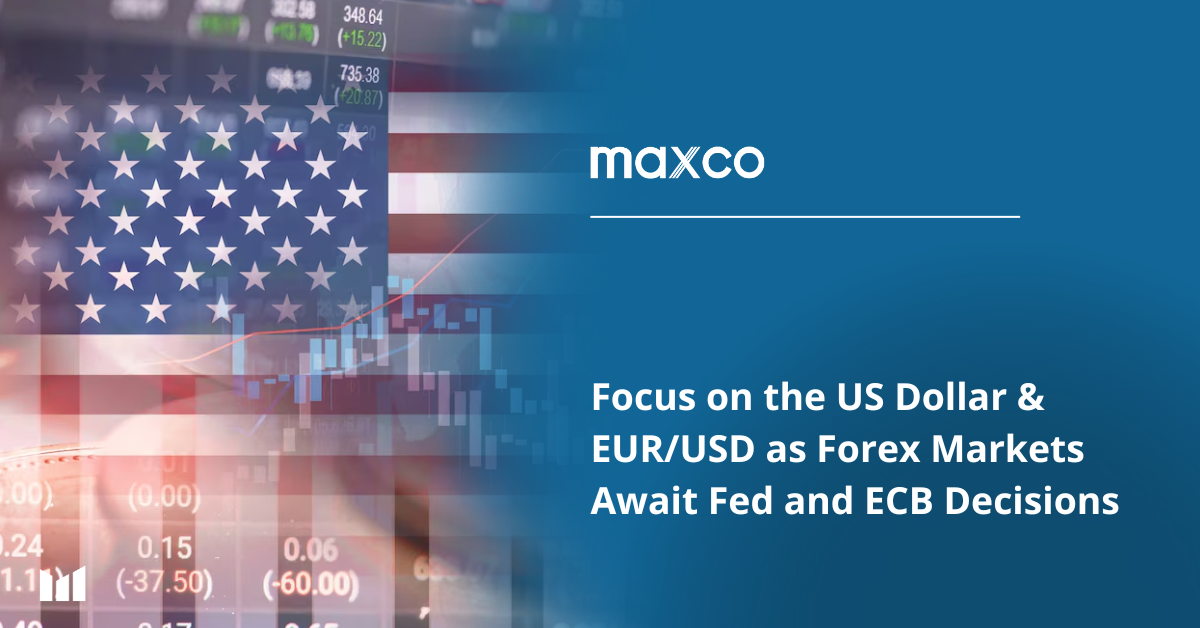In the global financial landscape, the constantly shifting wave of interest rate speculation has created significant ripples across markets, particularly influencing the movement of major currencies such as the US Dollar (USD) and the Euro (EUR).
As investors weigh the potential for rate cuts by major central banks such as the Federal Reserve and the European Central Bank (ECB), market volatility has surged, with traders closely watching for any signs of policy shifts that could reshape the global economic outlook.
The Federal Reserve’s Path: A Glimpse into Potential Rate Cuts
Speculation surrounding the future monetary policy of the Federal Reserve has been a major driver of recent fluctuations in the US Dollar. The Fed has taken an aggressive stance in fighting inflation, implementing a series of rate hikes over the past year to curb rising living costs.
However, with inflation beginning to show signs of stabilizing and economic pressures mounting amid slowing global growth, investors have increasingly speculated that the Fed may soon pivot and begin easing interest rates.
Recent US economic data—including lower-than-expected inflation figures and signs of a cooling labor market—has fueled speculation that the Fed could start cutting rates sooner than previously anticipated. Such a move would mark a significant shift from the central bank’s prior hawkish stance, which has been a key pillar of USD strength.
While some market participants cautiously welcome rate cuts as a stimulus to economic activity, others remain wary of potential risks such as a resurgence in inflation or a loss of investor confidence in the Fed’s commitment to price stability.
If the Fed signals a move toward rate cuts, the US Dollar could come under downward pressure, as lower interest rates generally reduce a currency’s appeal to investors. However, the timing and pace of such cuts remain uncertain, with the Fed likely to continue monitoring incoming economic data closely before making a definitive move.

The European Central Bank: Navigating Inflation and Growth Concerns
Across the Atlantic, the European Central Bank also faces mounting pressure to adjust its monetary policy amid evolving economic conditions. Like the Fed, the ECB has raised interest rates in recent months to combat surging inflation across the euro area.
However, as Europe grapples with both inflationary challenges and slowing economic growth, growing speculation suggests that the ECB may soon shift its focus toward rate cuts to support economic activity.
The euro has shown sensitivity to these expectations, with investors adjusting their positions in anticipation of potential ECB action. Central to this discussion are the ongoing economic hurdles facing the eurozone, including volatile energy prices, supply chain disruptions, and geopolitical tensions.
Though inflation has shown some signs of easing, the region’s economic recovery remains fragile, and policymakers are eager to prevent the eurozone from slipping into a prolonged period of stagnation.
As the ECB navigates the delicate balance between curbing inflation and fostering growth, the outlook for rate cuts has become a focal point of market attention. Lower interest rates could provide much-needed support to the eurozone economy but may also risk reigniting inflationary pressures.
The central bank is likely to take a cautious approach, weighing the trade-offs between monetary stimulus and price stability when determining its policy direction.
Currency Market Impact: Spotlight on the USD and Euro
The potential for interest rate cuts by both the Federal Reserve and the European Central Bank has introduced a new dynamic into the foreign exchange market, with the USD and Euro under particular scrutiny.
The US Dollar has long served as a safe-haven currency, bolstered by rising interest rates and the Fed’s aggressive policy stance. However, with rate cuts in the US becoming increasingly likely, the USD could face downward pressure—especially if Fed action creates a significant interest rate differential between the US and other major economies.
Conversely, the Euro faces its own set of challenges, including concerns about economic growth and inflation. Nevertheless, potential ECB easing could have mixed implications for the Euro. While rate cuts might provide short-term relief for the eurozone economy, they could also reduce the Euro’s appeal for yield-seeking investors.
As a result, the EUR/USD pair has become highly sensitive to economic developments in both the US and Europe, with fluctuations in interest rate expectations driving much of the price action.
Global Implications and Investor Sentiment
The growing speculation around interest rate cuts is not just a story limited to the US and Europe—it also carries broader implications for global financial markets. Central banks worldwide are facing similar challenges, as inflationary pressures persist and economic growth weakens.
Decisions made by the Fed and the ECB are likely to serve as benchmarks for other central banks, which may choose to follow similar policy directions.
For investors, the uncertainty surrounding interest rates has created a climate of caution. As central banks strive to balance inflation control with growth support, market participants remain alert to potential policy shifts that could have widespread effects.
The global economy remains at a crossroads, with central banks facing difficult choices that will shape the future of monetary policy and global financial markets for years to come.
Remaining in Wait-and-See Mode
As markets await clarity on the future policy direction of the Federal Reserve and the European Central Bank, interest rate speculation is likely to remain a key driver of market movements.
The USD and Euro—along with other global currencies—will continue to be influenced by every hint of a rate cut or policy adjustment, creating a volatile yet potentially rewarding environment for traders and investors.
With both central banks under pressure to act, the future trajectory of global monetary policy remains uncertain, and much will depend on economic data and geopolitical developments shaping the financial landscape in the months ahead.
